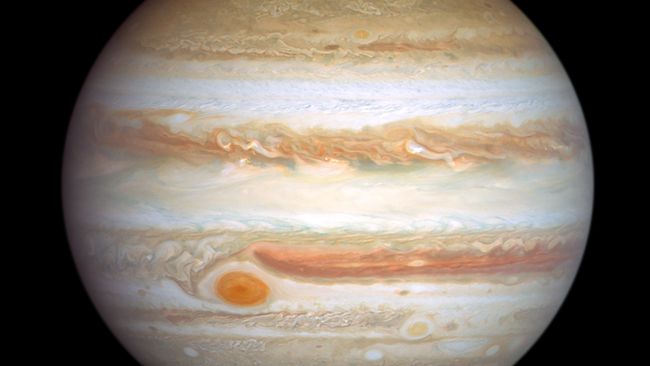An amateur astronomer used an old technique to study Jupiter -- and found something strange
By Victoria Corless published 7 hours ago
"Astronomers will always assume a simple model unless there is overwhelming evidence that this simple model is flawed."

A tan, gaseous Jupiter hangs in black space, layered like a cross section of geological survey, a swirling red storm at its lower left.
An image of Jupiter. (Image credit: NASA/ESA/Amy Simon (NASA-GSFC))
Scientists and amateur astronomers have teamed up to upend a long-held assumption that Jupiter's iconic swirling clouds are made of frozen ammonia — a pretty foundational revelation about the gas giant we thought we knew well.
Using commercially available telescopes and spectral filters, an amateur astronomer named Steve Hill collected data to map the abundance of ammonia in Jupiter's atmosphere, but Hill ultimately found something that contradicted previous models of the gas giant's atmospheric composition to begin with.
"I was intrigued!" Patrick Irwin from the University of Oxford told Space.com. "At first, I was dubious that Steve's method could produce such detailed ammonia maps." But as the analysis unfolded, doubt gave way to excitement — it was clear that Hill was onto something.
Jupiter's atmosphere is mostly composed of hydrogen and helium, with small amounts of ammonia, methane, water vapor and other gases. These latter components condense at different levels to form clouds, which reflect sunlight to create the planet's striking appearance. Because ammonia is known to be present in Jupiter's atmosphere and is predicted to condense (or form clouds) at the lowest pressure of all the known gases, scientists widely assumed that the planet's main observable upper clouds were made of ammonia ice.
More:
https://www.space.com/the-universe/jupiter/an-amateur-astronomer-used-an-old-technique-to-study-jupiter-and-found-something-strange
